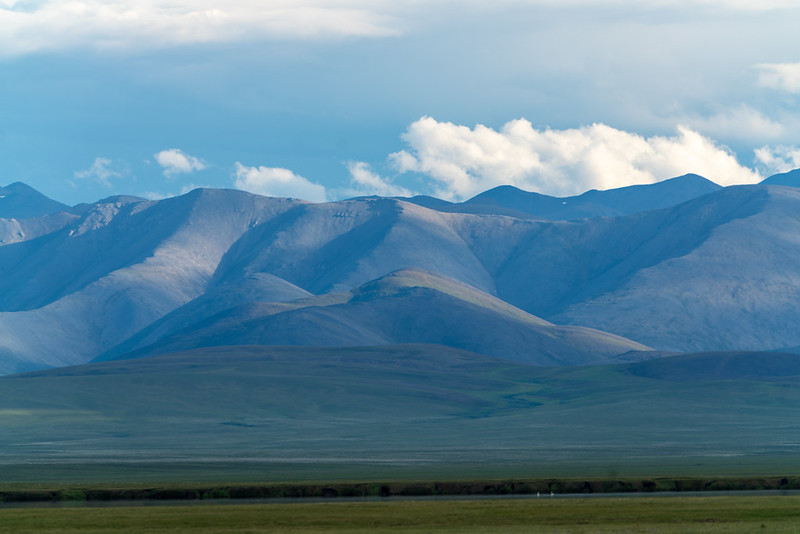
President Biden's First Environmental Steps
President Joe Biden was inaugurated on January 20th, and before the day was over had issued a number of executive orders and proclamations from the Oval Office. Several of these orders will have important and positive impact on the work of the International Marine Mammal Project (IMMP) of Earth Island Institute and the health of whales, dolphins, and their ocean homes.
Rejoining the Paris Climate Agreement
The Trump Administration called global warming a “hoax” and, beginning the process in June 2017, pulled the US out of the Paris Climate Agreement, an international treaty intended to address the increase of carbon dioxide and other greenhouse gases in the atmosphere threatening the Earth. Virtually every nation on Earth is a member.
President Biden reversed the Trump decision, rejoining the agreement via an executive order.
Scientists believe about half of the carbon dioxide added to air from burning fossil fuels is absorbed by the oceans, with serious consequences for marine life. Carbon dioxide, a mild acidic chemical, is causing the oceans to become slightly less salty. Many organisms at the base of the ocean food chain, such as diatoms, coral reefs, shrimp and krill, incorporate calcium from the ocean waters to build their shells. Many climate scientists worry that the carbon dioxide acidification of the oceans will interfere with the extraction of calcium, resulting in collapse of the food chain and destruction of the ecosystems that sustain the oceans.
Global heating from greenhouse gases is another threat, with large expanses of the Earth, especially at the poles, becoming warmer. The sea level is rising, and fish populations that marine mammals depend on for food are being harmed.
The US has just four percent of the world’s population, but has contributed to about a third of excess human carbon dioxide emissions over time.
The Paris Climate Agreement is by no means perfect. The limits on global output of greenhouse gases in the treaty are too high to prevent catastrophic global warming, and many nations are not meeting even these modest goals. But until the agreement is strengthened, is currently the best way for the US to join with other nations to effectively and cooperatively reduce greenhouse gases.
Stopping Oil Drilling Leasing in the Arctic National Wildlife Refuge
The Arctic National Wildlife Refuge is one of the largest refuges in the US, and its coastal plain, long coveted by the oil industry and State of Alaska, is the biological heart of the refuge. The Porcupine caribou herd migrates to the coastal plain to give birth to their calves during the short Arctic summer.
The Trump Administration issued a few permits for oil exploration and drilling (major oil companies did not bother to bid), revealed just the day before Joe Biden took office. The new president has imposed a temporary moratorium on leasing in the refuge.
The refuge is the only place in the US where polar bears den on shore during the winter, very important in view of the loss of Arctic sea ice due to global warming. Furthermore, oil development of the coastal plain would set up the industrial infrastructure to allow easier oil drilling offshore the refuge in the Arctic Ocean, home of beluga and bowhead whales, walruses, and many other important species.
Permanent protection for the refuge lies with Congress, which should designate the coastal plain as a Wilderness Area, off limits to oil drilling and other construction that would interfere with the wildlife.

Blocking Construction of the Keystone XL Pipeline
While the Keystone XL Pipeline poses extreme environmental risks, the Trump Administration nonetheless pushed construction forward. President Biden has now blocked construction by withdrawing the federal permit.
The pipeline was intended to carry crude oil distilled from Canadian tar sands, a particularly polluting, destructive and expensive form of crude, to ports in the US Gulf of Mexico, where the crude could be processed and exported. Indian tribes in the Dakotas and environmentalists had rallied against building the pipeline through the tribal water supply, to no avail.
Oil in the Earth should stay in the Earth, if we are to curb the burning of fossil fuels that are the main contributor to global warming.
There are a number of very similar oil pipeline proposals with associated construction moving forward, and IMMP is encouraging the Biden Administration to review and curtail these pipelines as well. The Biden Administration is expected to be much more supportive of alternative, cleaner energy projects than the previous administration.

Reestablishing Environmental Protections
President Biden also issued an order to federal agencies to review and reinstate more than 100 environmental regulations that were overturned or weakened by the Trump Administration.
These first steps are very positive, but IMMP and our coalition groups are seeking greater action from the Biden Administration and Congress over the next four years. We will need to support them and, when necessary, criticize them if the steps they take do not go far enough to protect the ocean and all its inhabitants.
Your continued support is critical at this time. We have a huge job to do – our IMMP Team is preparing numerous campaigns for 2021 to phase out captivity of cetaceans, to address nets and fishing lines that entangle and drown marine mammals, as well as to continue pressuring Japan and Russia to end captures of wild whales and dolphins. Can you donate today to help our efforts? Thank you!
